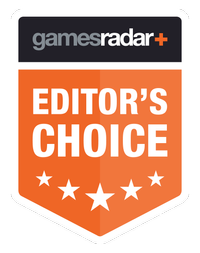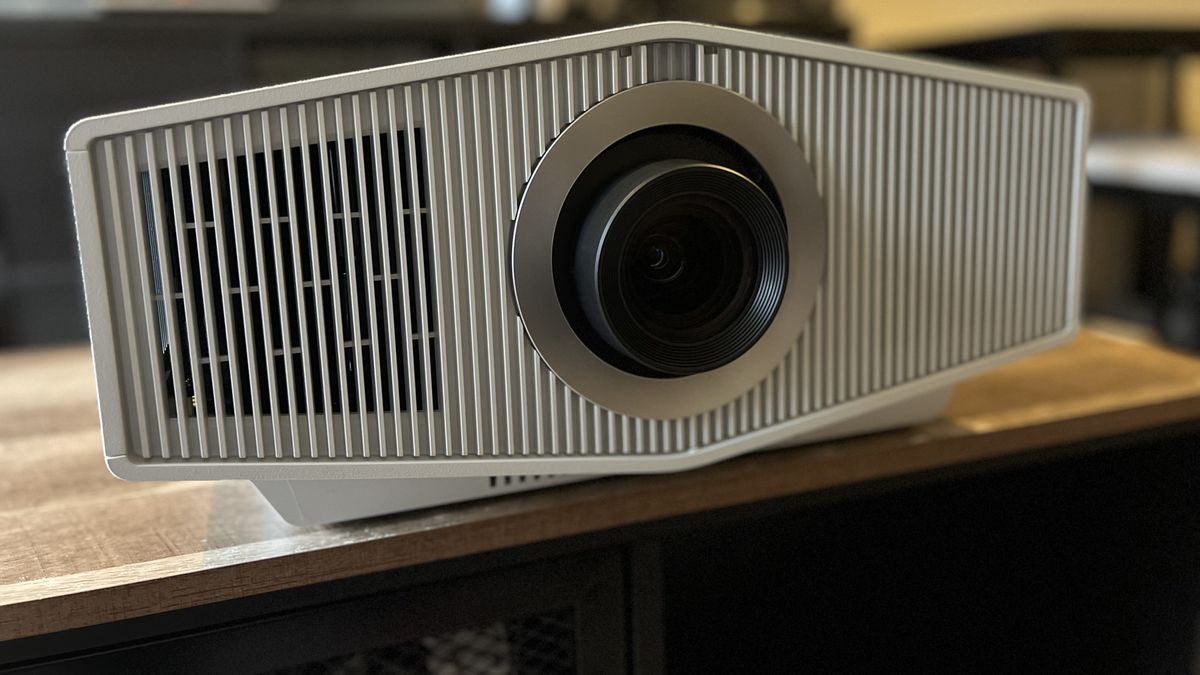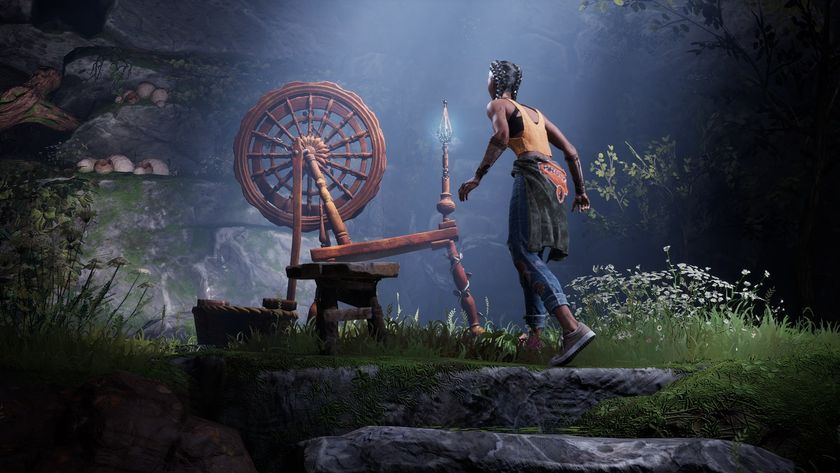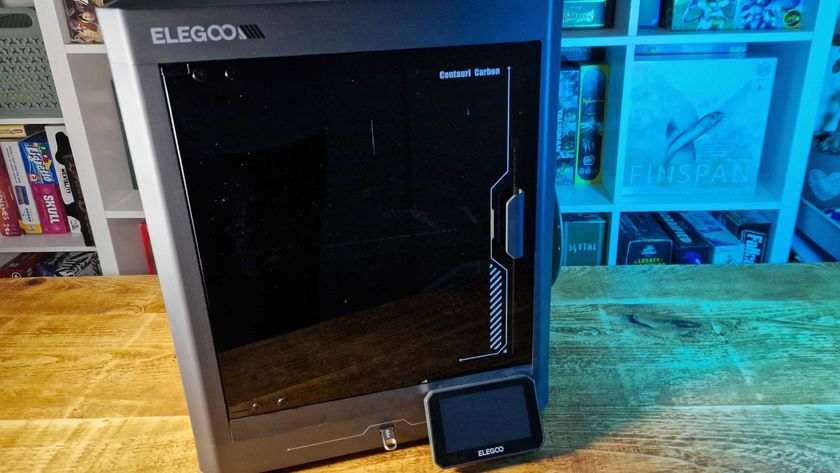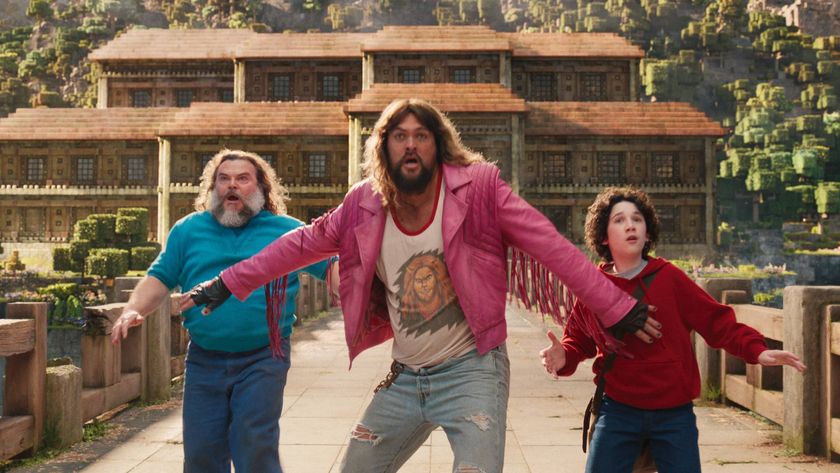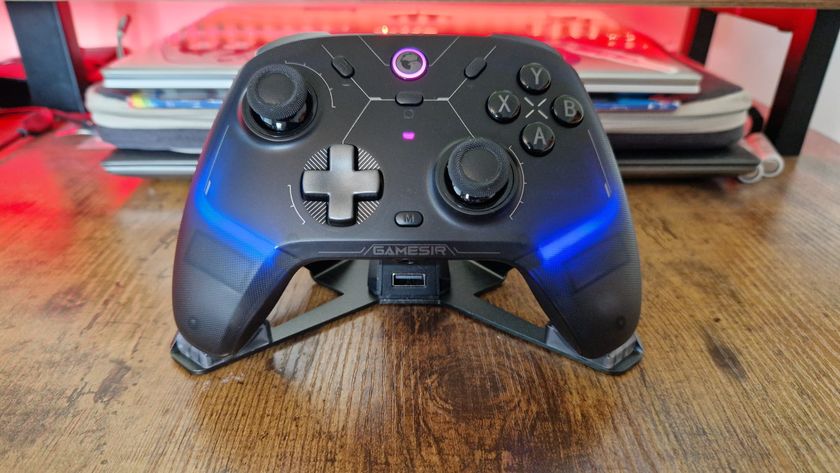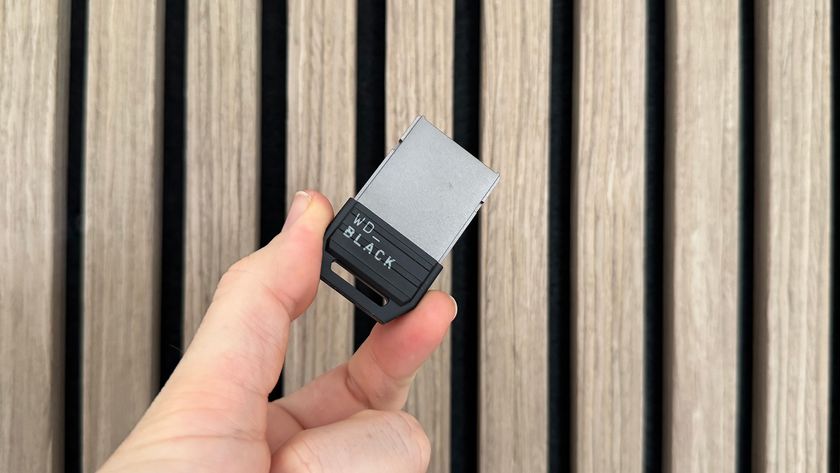12DOVE Verdict
The Sony Bravia Projector 8 (VPL-XW6100ES) sits right at the peak of the home entertainment world, with spectacular image quality straight out the box and a brand-new XR processor at the helm. It’s a larger device than more mainstream mid-range models, but if you’re kitting out a home cinema it’s at the top of its game.
Pros
- +
Excellent image quality straight out of the box
- +
Versatile setup options
- +
Incredible HDR features
- +
Plenty of additional settings
- +
Quiet fans
Cons
- -
Not the fastest gaming latency
- -
Less tolerant of ambient light than Bravia 9
Why you can trust 12DOVE
The Sony Bravia line is better recognized by its high-end OLED TVs, but the brand is bringing the name over to its equally prestigious projector range with the new Sony Bravia Projector 8 (VPL-XW6100ES). Released in September, alongside a more premium Bravia 9 model, the latest addition to Sony’s 4K SXRD collection is one for the enthusiasts - as if that $15,999 / £15,999 price tag didn’t give it away already. This isn’t your first projector, but if you’re building a home movie theatre and going all out on UHD it’s a go-to. Yes, the JVC DLA-NZ900 is creeping around the same price point, with similar HDR features to boot, but Sony just clinches this deal.
While the Bravia 8 is recognizable to anyone who has previously used the brand’s VPL-XW6000ES model, there are a lot of firsts here. The Sony Bravia 8 is the first Sony projector to use the brand’s XR processor (a generational step on from the previous X1 Ultimate), a central unit that previously only ever made its way to Bravia TVs. That means features like XR Dynamic Tone Mapping and XR Deep Black are on the cards for the first time - a must-see for true cinephiles. Competition among the best projectors at this price range is close, but after a month of testing, it’s difficult to see anyone needing anything else from one of the best 4K projectors on the market.
| Price | $15,999.99 / £15,999.99 |
| Brightness | 2700 ANSI Lumens |
| Resolution | 3840 x 2160 |
| Light source | Z-Laser Phosphor |
| Throw ratio | 1.35-2.84 |
| Color gamut | 95% DCI-P3 |
| HDR | HDR10, HLG |
| Image size | Up to 200-inch |
| Audio | N/A |
| Ports | 2x HDMI 2.1, 1x USB-A, 3.5mm audio, RS232 control, 3.5mm IR, RJ45 Ethernet |
| Dimensions | 18.1 x 8.3 x 20.4 inch |
| Weight | 31lbs (14kg) |
Design
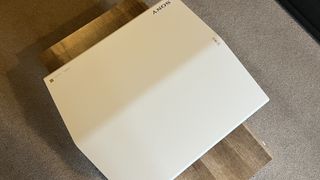
Compared to most mainstream projectors I’ve tested in the past, the Sony Bravia Projector 8 is a huge undertaking. At 31lbs and 20inches wide, it’s not going to tuck away neatly in the corner of a smaller viewing space - though it is easily mountable for a more subtle installation. In this world of high-end models, though, this size is par for the course - and the Bravia Projector 8 is actually more compact than its predecessors. Older models used a larger imaging system which therefore required larger lenses, but the new three-chip system in the Bravia 8 allows it to shrink compared to those juggernauts.
While I was surprised by just how large and heavy it is (I realized I would have to move to a more spacious location in order to properly test it once I took it out the box), those on the hunt for a $15K projector aren’t going to expect anything less. That means it comes down to handling and build quality - both of which carry that Sony stamp of luxury.
Everything feels incredibly well put together - joins are seamless, the plastic chassis is solid and durable, and there are only very few creaks when lifting and placing the projector itself. Each button feels well centered, with a satisfying clack and strong feedback, and ports are free from any interference.
I received the white model for testing, though the Sony Bravia Projector 8 is also available in a more traditional black color. That white is a little muted so it doesn’t stand out when placed on a table in front of us - but I would still prefer the black version if you’re keeping your device in pride of place.
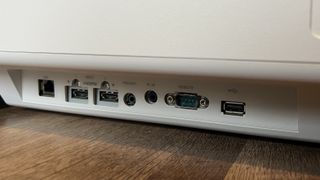
The left hand side offers a selection of simple controls, from power, input, and menu access, with ports tucked away underneath the main overhand of the body itself. Not having these connections to the rear of the device could cause some issues depending on where you’re planning on placing your device (they did sprawl out to the side in a fairly unattractive manner during testing). However, the larger top portion of the chassis does hide them fairly well and give you a little wiggle room if you’re using a cable run or tube.
A centered lens (with supplied cover) juts out from the front of the device, flanked by generous grills running on each side and covering the rear panel as well. Air circulation sounds efficient - I never noticed any undue fan noise from the device during everyday use, only picking up on the whirrs when seated within around five feet of the device.
Features
Let’s get straight into that XR processor, as it’s doing a lot of heavy lifting when it comes to overall image quality and HDR performance. The XR chip is the next evolution of the Sony Bravia X1 Ultimate system, offering real-time brightness and color adjustments, controlling dedicated laser dimming for darker black levels that don’t sacrifice the vibrancy of the surrounding image, and upscaling with over a billion colors for a fantastic result from lower resolution images.
XR Dynamic Tone Mapping is responsible for that real-time processing. Projectors generally give you a slider to control when creating presets for HDR content, but this is static - it won’t give different scenes their own levels of brightness, color, and detail, instead washing over the picture with a grading that might only make sense for certain images. The Sony Bravia Projector 8 handles its HDR adjustments frame by frame. There are three modes to choose from, with various different highlight and lowlight details. The result is a far more vivid image with detail spread across all different light levels of a scene. This is particularly noticeable in more shadow-heavy scenes.
That’s also where XR Deep Black comes into play. The system further enhances these shadowy details with laser dimming - essentially you get more information from darker aspects of the scene without having to sacrifice the vibrancy of lighter areas.
The XR processor also brings in XR Clear Image for turbo-charged upscaling, running everything from standard HD TV to old movies in a much higher resolution, while Triluminos Pro gives the Sony Bravia Projector 8 over a billion colors to play with overall.
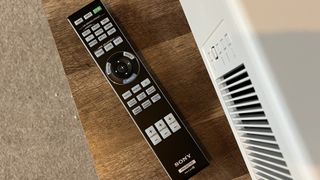
We’re not done yet - Cognitive Intelligence has to be one of my favorite features in this tech, but it can easily fade into the background if you’re not looking for it. The system essentially works out the objects you’re most likely to be looking at in each scene, and ramps up image processing to ensure they look their best.
All of that runs at a maximum brightness of 2,700 ANSI Lumens, with an image covering 95% of the DCI-P3 color gamut and both HDR10 and HLG support.
I was expecting setup to be a pain. This is a high-end projector for enthusiasts who know what they’re doing, and that normally means a lot of color correcting, preset tweaking, and manual placement requirements. I was pleasantly surprised. The wide zoom range means I had far more flexibility in the Sony Bravia Projector 8’s location, and while it was a little large to house in my own tiny living room, it easily slotted into one of the larger cubbies in my friend’s dedicated basement movie space.
The system also features Corner Keystone correction, which allows for extra image placement tweaks as well. I usually stay well clear of these settings during the main testing period - they can often wash out the image altogether, adding an extra layer of processing that draws valuable resource away from the image quality itself. However, there was very little degradation to the overall picture with this handy system in place and it meant I was able to get a perfect screen placement without the headache. The motorized lens also offers horizontal and vertical lens shift for even more versatility as well. Menus are easily navigable but still hold a wealth of more minute settings that can be found and tweaked particularly easily.
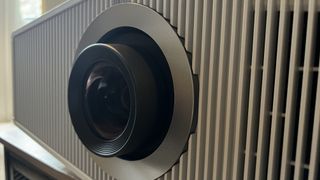
That’s all fine for movies, but the Bravia Projector 8 has another weapon in its arsenal. Those HDMI 2.1 ports aren’t just for show, this is a fantastic projector for PS5 and Xbox Series X as well. The system can run 4K gameplay at 60Hz with an input lag of around 21ms, which zips down to 12ms when running in 1080p / 120Hz. There are faster gaming projectors out there - the BenQ X3100i can run 4K60 gameplay at 16.7ms, dropping down to 8.3ms at 1080/120 - but to see these kinds of speeds on a home theatre projector of this caliber is still exciting.
So what are you dropping from the Bravia 9 model? The Bravia 8 doesn’t feature Sony’s Live Color Enhancer, a setting that boosts brightness and overall detail when faced with higher ambient light levels. It’s also slightly less bright overall than the 3,200 lumen premium model. It’s also worth noting that there’s no sound system built in - though if you’re spending this much on a lens it’s easy to bank on the fact that you’ve already got a set of speakers to use.
Performance
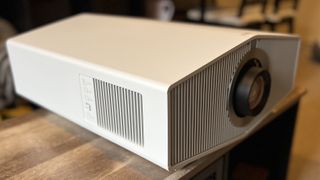
I was impressed with the Sony Bravia Projector 8’s performance straight out of the box. I could easily set and forget this device and still marvel at the vividity and detail in a range of different movies and games - without even touching some of the more exciting features under the hood. I thought this projector had changed the game when I first booted it up - then I revved all its engines and was blown away all over again.
HDR is on another level with that XR tone mapping in play, making for a much higher contrast level in high-brightness settings, all with inky dark blacks and excellent shadow detailing. Even dedicated scene presets like Cinema Film and IMAX Enhanced offered tangible upgrades to the right content, with the former offering particularly warm tones in more relaxed scenes. Overall, HDR content was brighter, more vivid, and more detailed than I’ve ever seen it before.
Joker, running off a Blu-Ray through the PS5 ran beautifully, with incredible color representation that truly made the most of that contrast range with velvety colors bouncing off shadowed scenes beautifully. Detail was captured with intense sharpness, and while I had to retune the cooler tones to bring the reddish hues of these scenes out a little further, all retouches were simple and easy.
Dunkirk represents an extra challenge for the system’s HDR capabilities. This is a much more muted color space, largely filled with grays and blues. However, it was the detailing amongst the darker scenes that truly shone in this test. Here, those cooler tones played a fantastic role in allowing wider shots to breathe, all while Tom Hardy’s crash billowed with a super energetic clash of color. Even SDR content benefits from Sony’s attention to detail, with a more spruced image than I’ve typically seen even from similarly priced projectors.
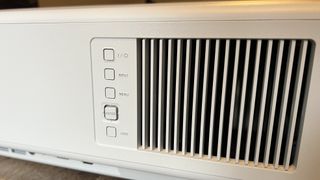
Of course, these movies are best enjoyed in the dark - but with a few ambient lights around the room the Sony Bravia Projector 8 still managed to keep its cool. It runs much better in low light than cheaper models I’ve come across, losing very little detail in brighter scenes and - thanks to the additional processing - maintaining its clarity in shadows as well. There is a noticeable difference in the overall pop of the image, which is to be expected - and there are ‘bright’ presets designed to combat this, but they do add a slight film over the picture as a result.
Gaming feels smooth during single player endeavours, though I the extra snappiness of the BenQ X3100i is still preferable if you’re playing more competitively. Overall picture quality in these solo missions is greatly improved on the Bravia, though. Assassin’s Creed Mirage’s brown and orange hues gathered a new lease of life when running through Sony’s lens, and the bubblegum color palette of Astro Bot is still burned into my retinas today.
Should you buy the Sony Bravia Projector 8 (VPL-XW6100ES)?
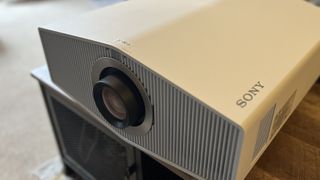
I spend most of my time tinkering with projectors in the $1,000 - $4,000 region, but have enjoyed my fair share of top-end options over the years. I’ve never seen a projector run like this. You don’t often see this level of improvement at the top end of the market, but (and I can’t believe I’m saying this) value is on Sony’s side here.
$16K is a lot to spend on anything, but if you’re ready for an investment that cash is getting you a lot here. If I could, I would watch all major releases on the Sony Bravia Projector 8 - it’s not only fantastic straight out of the box, but there’s a lot of room to grow with this device as well. Hours can be spent tinkering with intricate settings options and dedicated presets should you wish to get the best possible image quality for your setup, but the best part is you don’t need to do anything at all.
This is an enthusiast’s projector, but only its price cuts out the rest of the market. You don’t need to know the ins and outs of color theory or the minutia of projecting technology to get a cinema-grade home theatre here - and that’s worth a lot by itself.
Gamers beware, though. This isn’t necessarily the projector for you. Unless you’re also building out a full entertainment system, I’d recommend the much cheaper BenQ X3100i. Yes, you’ll get a better picture from Sony’s top-of-the-range model, but it runs at a slightly slower speed for around $13,000 more.
| Versatility | ★★★★☆ |
| Ease of use | ★★★★★ |
| Compatibility | ★★★★★ |
| Build quality | ★★★★★ |
| Picture quality | ★★★★★ |
| Brightness | ★★★★☆ |
How I tested the Sony Bravia Projector 8 (VPL-XW6100ES)
I used the Sony Bravia Projector 8 for a month, originally testing in a smaller living room area before moving into a full basement theatre setup. I tested the projector at a range of different presets (generally sticking to Cinema Film 2 and Game) across Joker, Dunkirk, and A Quiet Place Day One (via Blu-Ray on PS5). I also tested in SDR content running via Netflix. I tested Assassin’s Creed: Mirage, Astro Bot, and Apex Legends on PS5 using the system’s HDMI 2.1 connection as well. For more information on how we test projectors, check out the full 12DOVE Hardware Policy.
We’re also rounding up all the best outdoor projectors and the best portable projectors for more on-the-go options, or check out the best gaming TVs for a more traditional panel.

Managing Editor of Hardware at 12DOVE, I originally landed in hardware at our sister site TechRadar before moving over to GamesRadar. In between, I've written for Tom’s Guide, Wireframe, The Indie Game Website and That Video Game Blog, covering everything from the PS5 launch to the Apple Pencil. Now, i'm focused on Nintendo Switch, gaming laptops (and the keyboards, headsets and mice that come with them), PS5, and trying to find the perfect projector.

6 new movies and shows to watch this weekend on Netflix, Prime, Disney Plus, and more (April 4 - 6)
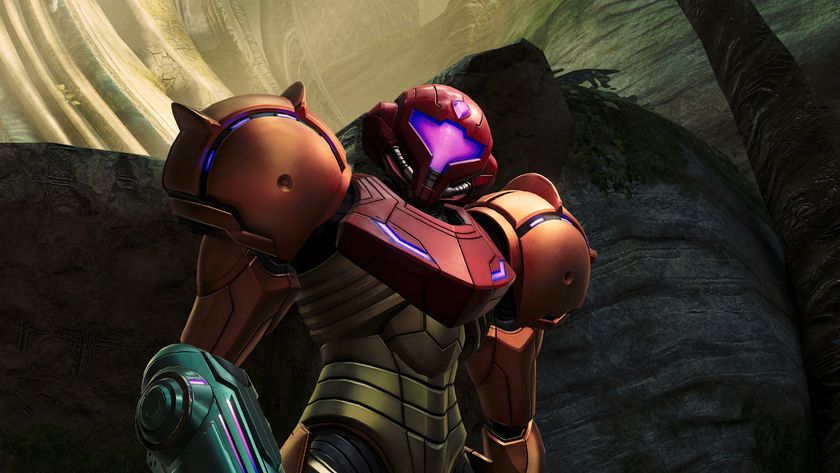
Metroid Prime 4's Star Wars-style opening space battle has the 14-year-old Metroid nerd in me absolutely screaming

Marvel Rivals season 2 adds Emma Frost and Ultron as the Hellfire Gala becomes a battleground
